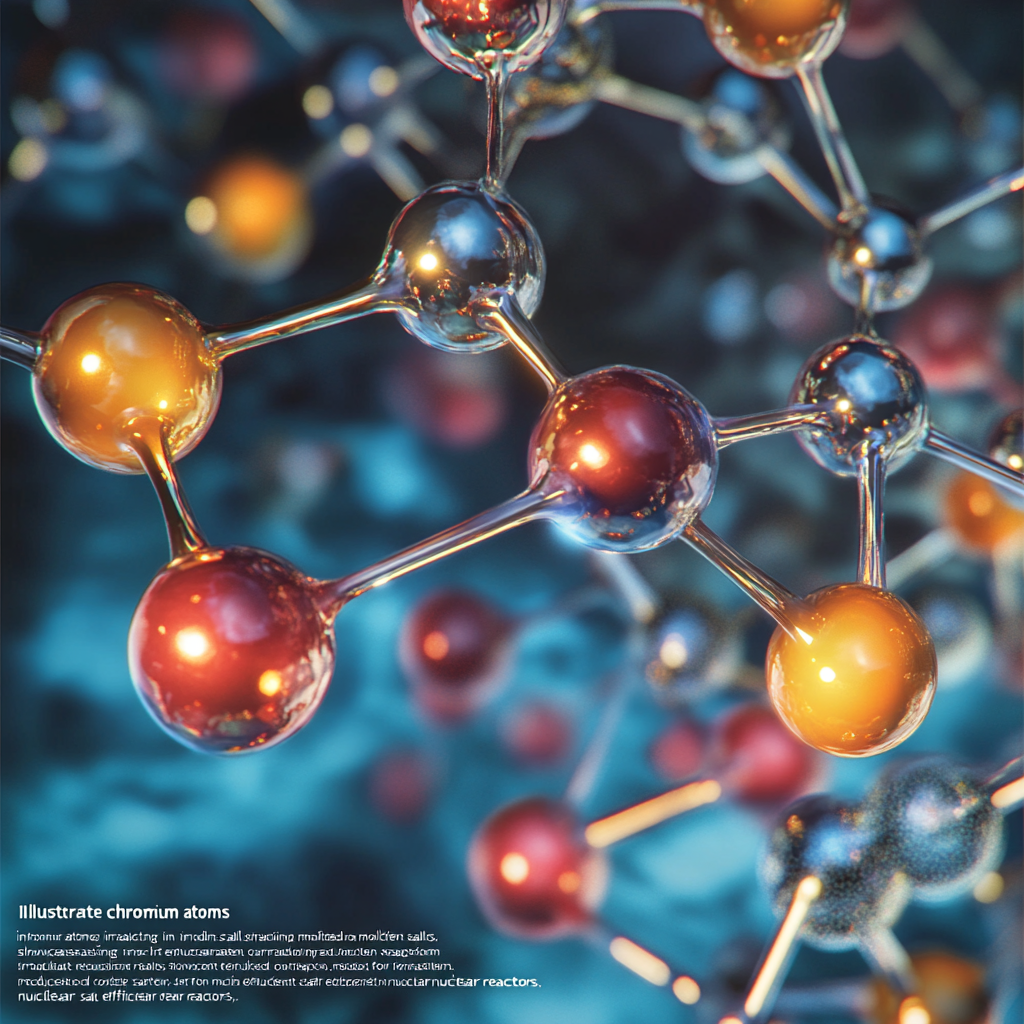
Study tracks chromium chemistry in irradiated molten salts
Unraveling the Secrets of Chromium Chemistry in Irradiated Molten Salts
Imagine this: a world where nuclear reactors aren't just humming along, but they're also safer, more efficient, and greener than ever before. No, this isn’t the plot of some high-budget sci-fi flick; it’s the reality that scientists, especially the brainiacs at Brookhaven National Laboratory, are working towards. They’ve stepped into a captivating realm of chromium chemistry within irradiated molten salts—a study that holds the promise of revolutionizing nuclear energy technology as we know it.
Diving straight into the study, it unfolds an intriguing exploration of how radiation impacts chromium ions nestled in molten salts. Now, what’s the deal with these molten salts, you ask? They’re not just fancy technical jargon; they represent a vital piece of the puzzle in advanced nuclear reactor designs. The findings suggest that, when radiation comes into play, it can transform pesky, corrosive chromium ions (specifically the trivalent ones—Cr³⁺) into their less troublesome counterparts (the divalent ions—Cr²⁺). And why does this matter? Because fewer corrosive ions mean a reduced chance of corrosion wreaking havoc on reactor components. Just think of it as corrosion control magic—but with science!
When pondering nuclear energy, corrosion tends to lurk as one of its biggest villains, particularly in reactors cooled by molten salts. This research opens the door to a game-changer: the rapid conversion of chromium ions could significantly diminish the corrosion that metal alloys typically suffer from. And let’s be real here, maintaining the integrity of reactor materials isn’t just important; it’s essential for enhancing the lifespan and performance of these systems. Especially when molten salt reactors are already leading the charge with considerable advantages over traditional designs—safer features and higher operational temperatures that could have us sipping our morning coffee powered by cleaner energy!
Of course, every silver lining has its cloud. While this study glimmers with promise, it doesn’t shy away from spotlighting the complexities hidden within molten salt environments. For example, when chromium shakes hands with salt-soluble elements, it can ramp up the corrosion rates, particularly when exposed to radiation. It’s a bit like inviting a wolf into a sheep’s pen—potentially disastrous. However, fear not! There’s a knight in shining armor: introducing less soluble elements like nickel can create protective barriers to fend off corrosion over time. Who said chemistry isn't about playing defense?
To explore these dynamics further, our intrepid researchers have donned their lab coats, wielding advanced tools of the trade like synchrotron X-ray nano-tomography and density functional theory (DFT) simulations. What does that mean for you? Well, it’s akin to having a pair of super-powered glasses that allow them to see the intricate detail of the molecular dance taking place at the metal-molten salt interface. These methods divulge insights into the morphologies and chemical changes occurring, showcasing various chromium phases that enhance stability. It’s chemistry at its finest, revealing the sort of secrets that were once just whispers in the academic wind.
As we stand on the brink of a new era for nuclear energy, the implications of this research extend far beyond just chromatic transformations. This study symbolizes a pivotal leap towards creating sustainable energy systems that can ultimately power our homes without frying the planet. In a world where the call for cleaner energy solutions grows louder, breakthroughs in material science like these become not just significant—they're essential. They pave the way not only for better power generation but also ensure that future reactors are robust, reliable, and ready to face the challenges of modern energy demands.
In wrapping up this examination of chromium chemistry and its nuclear implications, it’s crystal clear that knowledge is no longer just power—it’s the beacon guiding us toward a brighter, sustainable future. While this exploration reveals exciting prospects, it’s just the tip of the iceberg. As we delve deeper into the mysteries of nuclear technology and the delicate balance of chemistry that makes it work, it’s clear: keeping up with the latest revelations is key.
So, as you embrace this journey into the world of molten salts and nuclear innovations, how about staying in the loop? Want to stay up to date with the latest news on nuclear energy innovations and molten salt technology? Subscribe to our Telegram channel: @channel_neirotoken

